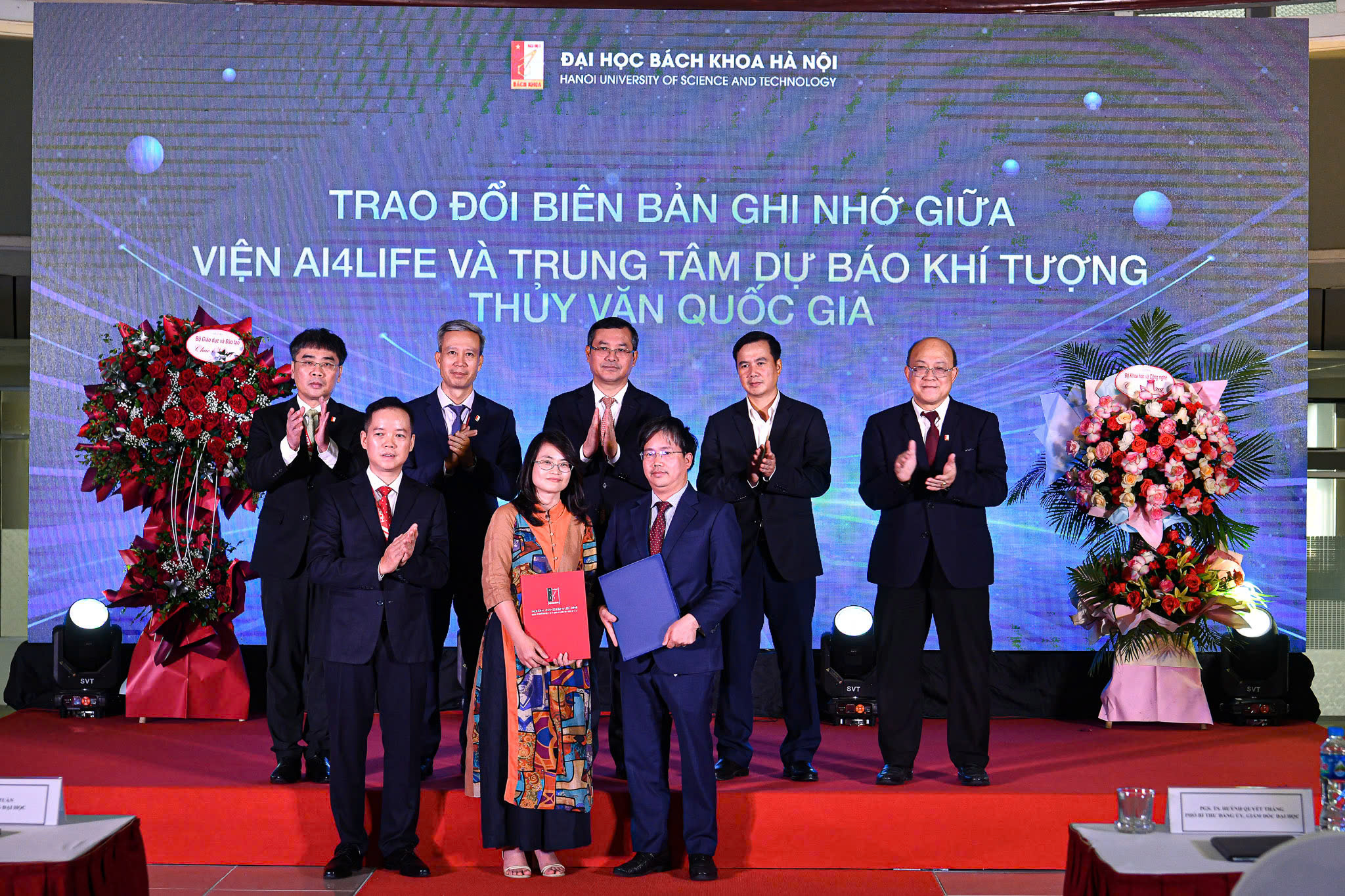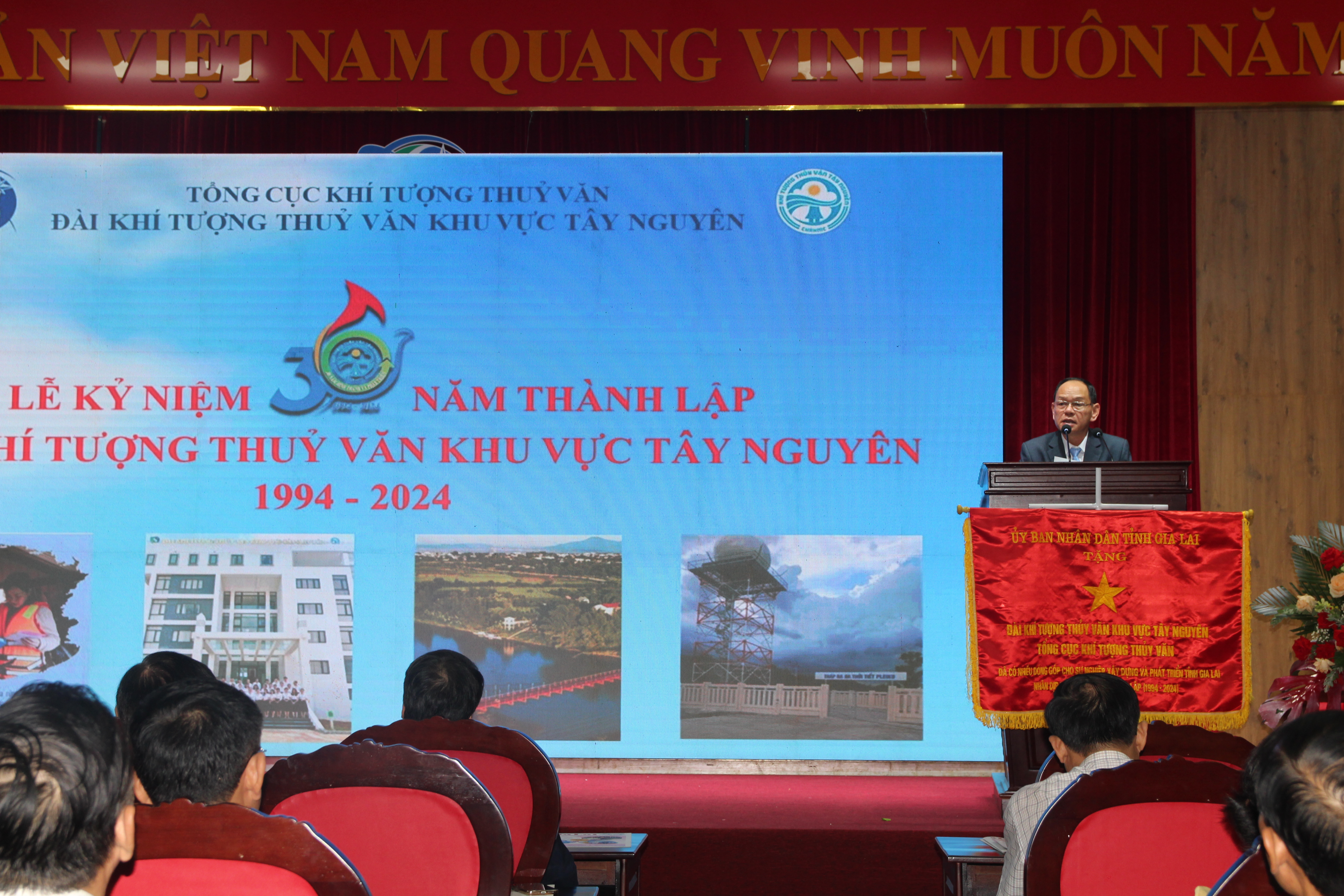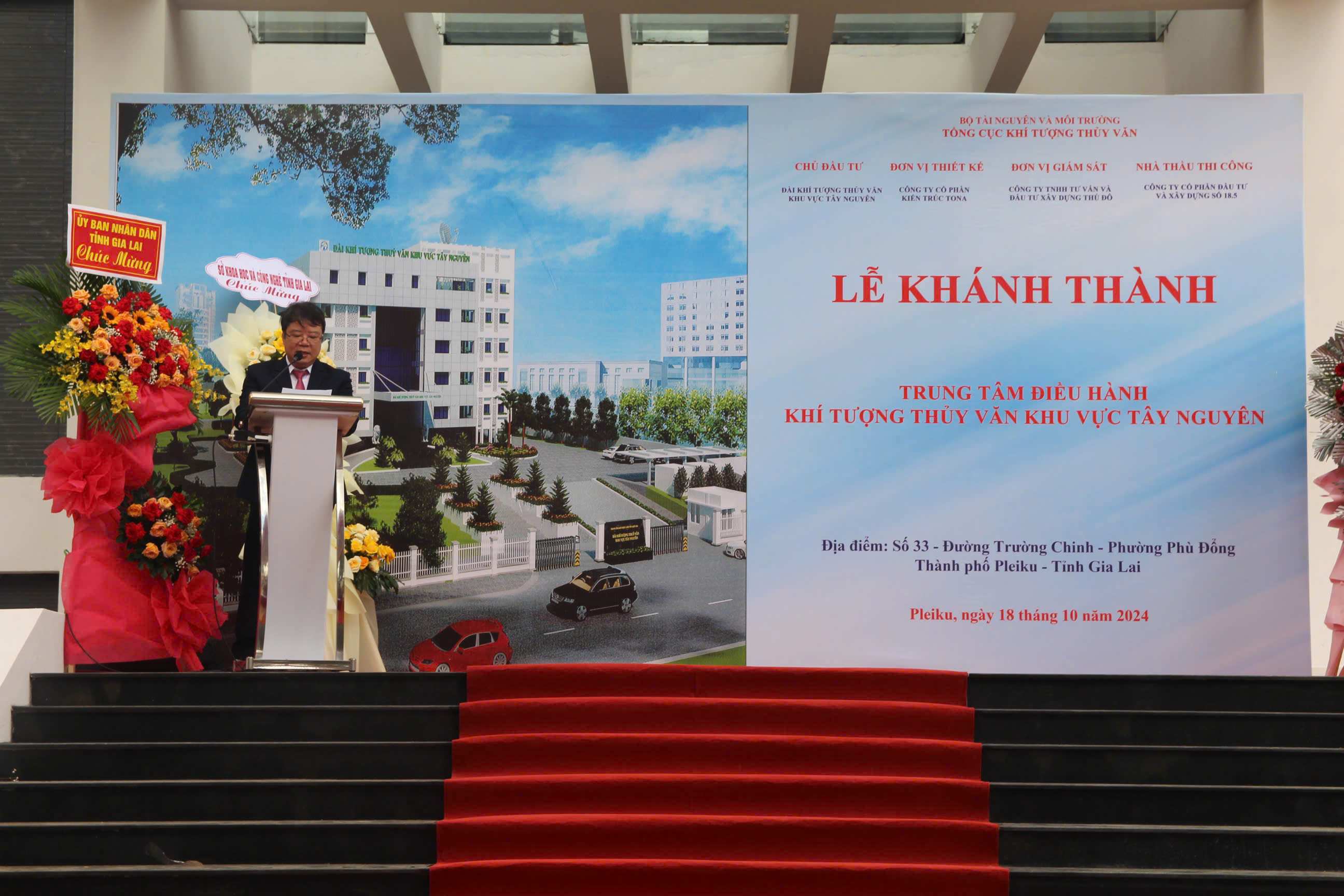|
No |
Research Paper and Author |
Page |
|
1 |
The scientific and practical foundations for sustainable development and climate change response in Mekong Delta, Vietnam Mai Trong Nhuan1, Nguyen Tai Tue1,2, Luu Viet Dung1, Tran Dang Quy1,2 1Key Laboratory of Geoenvironment and Climate change Response 2Faculty of Geology, VNU University of Science ABSTRACT Mekong Delta in Vietnam plays an important role of national economy and has highly diverse natural conditions and resources. In the context of climate change, sea level rise, and increasing the impacts from water utilization in the upstream Mekong River and natural resource exploitation within Mekong Delta, it is needed to have the scientific and practical foundations, strategies, solutions and models for large scale transformation in Mekong Delta towards sustainability and climate change response. However, the combination of the existing dam systems and water utilization from upstream of Mekong River have caused a quick decline of sediments and water discharge into the Mekong Delta. Additionally, the unsustainable use of natural resources within Mekong Delta is directly threatening the sustainable development. Therefore, it is needed to implement: i) integrating solutions of policies, integrated strategies, models and solutions to large scale transformation of socio-economic models; nature and ecosystem based sustainable natural resource use planning for proactive response to climate change and human impacts; ii) ensuring non-traditional security, smart response to climate change and disasters and other negative impacts in Mekong Delta; iii) enhancing science and technologies, human resource development and smart governance. Besides, it needs to promote international cooperation for building “Smart water governance in Mekong River and Delta” for sustainable development and climate change response. Keywords: Climate change, Mekong Delta, Transformation, Sustainable development. |
1 |
|
2 |
Valuation of biodiversity, landscape conservation value of the magrove ecosystem in Can Gio District, Ho Chi Minh City Le Xuan Tuan1, Tran Quoc Cuong1, Phan Thi Anh Dao2 1Hanoi University of Natural Resources and Environment, MONRE 2Center for Environmental Research, IMHEN, MONRE ABSTRACT Utilisation plans of wetland ecosystems in general and mangrove ecosystem in particular are usually determined based on direct use values of the ecosystems such as fisheries, timber, wood rather than indirect and non use values. However, decisions on the use of resources should take into consideration other costs such as opportunity costs and biodiversity conservation willingness so that conservation measures could be developed for sustainable development. From environment economy perspective, non use values can be interpreted as social perception and satisfactory on the conservation of biodiversity at a certain level and social willingness to pay for that. This paper presents the study on valuation of non use values of the Can Gio mangrove biosphere reserve, Ho Chi Minh City. The results show that the non use value of the study area is approximately VND 105 billion per year. The paper also shows the recommendations for managers, policy-makers and researchers in the conservation and sustainable use of resources’s Can Gio mangrove ecosystem in the context of climate change and sea level rise. Keywords: Can Gio mangrove biosphere reserve; Mangrove ecosystems; Economic values; Biodiversity; Landscape conservation. |
12 |
|
3 |
Germination test for diatoms from coastal estuary sediment Bach Quang Dung1 1Vietnam Journal of Hydrometeorology, Hanoi, Vietnam ABSTRACT Planktonic diatoms produce resting stages that survive in the sediment and allow species persistence over periods in which vegetative growth does not occur. Sediments from coastal estuary in the Mokpo Harbour, Korea were took and investigated. Diatom germination tests from sediment were carried out in laboratory. Diatom cells were identified by microscope based on standard method. This study provided more understanding of diatom germination from in situ sediment, seasonal condition as nutrient, light, moonson might also affect and decide significantly phytoplankton growth and bloom in coast. The study is very useful for investigation about plankton dynamic, food chain in coastal areas in general. Keywords: Diatom, Germination, Sediment, Coastal estuary. |
21 |
|
4 |
Integration of climate vulnerability assessment of civil society organizations intonational adaptation plan (NAP) in Vietnam Hoang Thi Ngoc Ha1, Nghiem Thi Phuong Tuyen2, Bui Thi Kim Oanh3 1Center for Eco-Community Development (ECODE), Vietnam 2VNU-Central Institute for Natural Resources and Environmental Studies (CRES) 3Center for Eco-Community Development (ECODE), Vietnam ABSTRACT Civil society organizations (CSOs) in Vietnam have been making significant contributions to climate change adaptation at both local and national levels. CSOs have been applying various methods in climate vulnerability assessment (CVA) to develop practical adaptive measures, with the more commonly used ones being “community-based”, “participatory”, and so on. The CVA methods that most CSOs have applied to climate change studies and projects in more than 30 provinces and cities include: HVCA, PVCA, CVCA and VA-EBA. The process and effectiveness of each method is different, depending on the technical capacity and support resources. Overall, the CVA results obtained are not only an important input for various adaptation programs, projects and models in localities but also a major contribution of non-governmental organizations to the National Adaptation Plan. This paper aims to provide evidence of climate vulnerability assessment for adaptation projects that have been implemented by CSO in the last 10 years as well as feedback of vulnerable communities and policy recommendations. Keywords: Civil society organizations (CSOs), Climate vulnerability assessment (CVA), Climate change, National Adaptation Plan (NAP). |
28 |
|
5 |
Improving the quality of severe weather warning with highresolution numerical weather prediction products for the WMO-severeweather forecasting demonstration project in Southeast Asia Mai Van Khiem1, Du Duc Tien1, Luong Thi Thanh Huyen1 1National Center for Hydro-Meteorological Forecasting ABSTRACT WMO mission to Hanoi in February 2011 determined that the NCHMF appeared to have an excellent development potential to undertake the role of the Regional Forecasting Support Centre (RFSC) in the Severe Weather Forecasting Demonstration Project for Southeast Asia project. To provide better product for developing the guidances for SWFDP-SeA, based on new capacities of High Performance Computing (HPC) of VNMHA, this paper presents new high-resolution numerical weather prediction products including very high-resolution deterministic products (WRF3kmIFS) and high-resolution regional ensemble systems (SREPS-32). WRF3kmIFS is configed by using the recently released version of Weather Research and Forecasting model with ARW dynamical core - WRF-ARW (version 3.9.1.1) with IFS (ECMWF) for boudary conditions while SREPS-32 is a set of combination of physical parameterizations. Some improved performances are shown relating to heavy rainfall and tropical cyclone over Southeast Asian domain and for the South East Asia Flash Flood Guidance Systems. Keywords: SWFPD-SeA, RFSC’s Hanoi, High-resolution regional products. |
39 |
|
6 |
A verification of heavy rainfall evens forecast skill of IFS model at the Middle Central of Vietnam Le Viet Xe1, Vo Van Hoa2, Le Thai Son3 1The middle central Regional Hydro-Meteorological Center 2The northern Red river delta Regional Hydro-Meteorological Center 3Sai Gon University ABSTRACT The paper presents the verification of capacity of heavy rainfall forecast IFS model by using the dataset of 75 automatic rain gauges collected of 59 heavy rainfall events of 2011-2018 rainfall seasons. The verification results based on ME, MAE, RMSE, R, BIAS, POD, FAR and ETS indices shown that the heavy rain forecast of IFS has good skill in forecast range of 1-3 days ahead. In addition, rainfall forecast of IFS model is over-estimated at small and medium rainfall thresholds and under-estimated in large and extreme large rainfall thresholds. The extreme rainfall forecast predictability of IFS model is good in some heavy rainfall events that caused by large-scale weather patterns. Keywords: Heavy rainfall forecast, verification, IFS model. |
48 |
|
7 |
Assessment of urban flooding in Yen Hoa - Hoa Bang area, Cau Giay, Hanoi Tran Kim Chau1, Tran Thi Quynh1, Nguyen Van Minh2, Nguyen Thanh Thuy1 1Thuyloi University 2Power Engineering Consulting Joint Stock Company ABSTRACT Hoa Bang street is known as one of flooding hot spots in Hanoi with 30 inundated times during last 4 years. In 2019, a new conduit has been set up to drain the water from Hoa Bang street to To Lich River. However, the flooding situation has not been significant improved. Therefore, it is necessary to evaluate the capacity of the drainage systems as well as effectiveness of flooding mitigation measures. In this research, the numerical model MIKE URBAN is used to simulate the rainfall-runoff, routing and surcharge processes in Yen Hoa - Hoa Bang areas. Water depth and flood durations are indicators to assess the performance of the proposed solutions. The result of this research indicates that the renovation of the drainage system, i.e. enlargement in conduits’ diameter, can reduce inundation time significantly. Keywords: MIKE FLOOD, MIKE URBAN, urban flooding, drainage system. |
56 |
|
8 |
Identification of relevant method for flood events design an approach to flood hazard assessment at river basin scale Truong Van Anh1, Le Thu Trang1 1Hanoi University of Natural Resources and Environment ABSTRACT Flood is one of the most dangerous natural disaster in Vietnam. Assessing flood hazard is a long term ambition of the society, especially in low-land cities where almost its communities expose to flood caused by heavy rainfall over its upstream river basin. In order to do that, designing flood events is one of the very first step. This paper evaluates some methods of flood design and give an advise for choosing relavant method in Vietnam which have been test in Vu Gia Thu Bon river basin. The procedure includes several steps: 1. Design a storm event which cause heavy rainfall over the basin; 2. Estimate the Arial Reduction Factor (ARF); 3. Estimate the flood peak; and 4. Design the flood events. The first step have been done by develop IDF curve over the basin; then several combination methods of Arial Reduction Fator and flood peak estimation have been applied and evaluated to choose the most relevant one with respect to literatural flood peak values. The result show that, USWB method for ARF identification in combination with Rational method for flood peak estimation give a very good result for flood hazard design. Keywords: Flood design, Vu Gia Thu Bon, Flood hazard, Flood risk. |
62 |

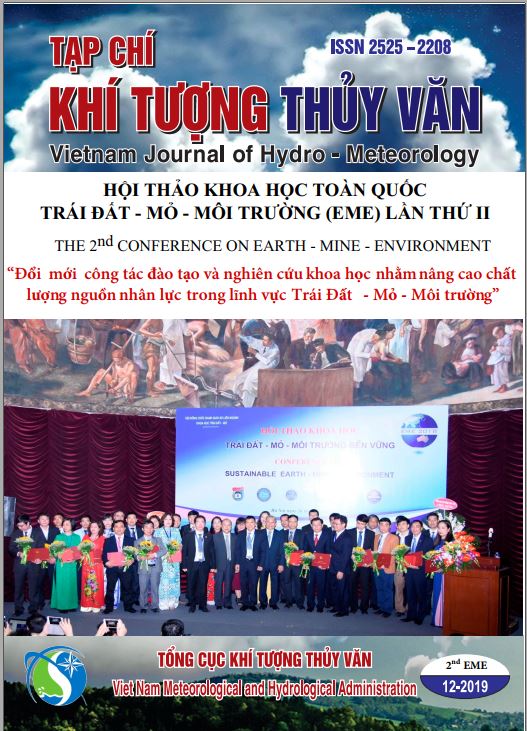

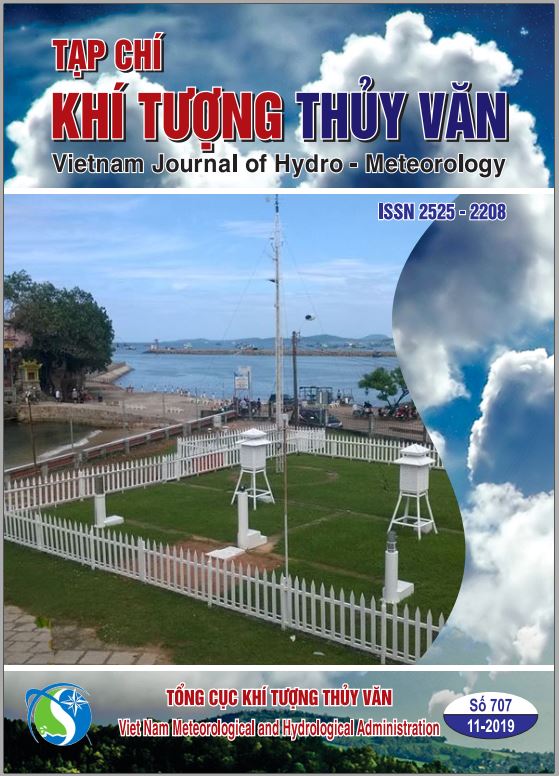
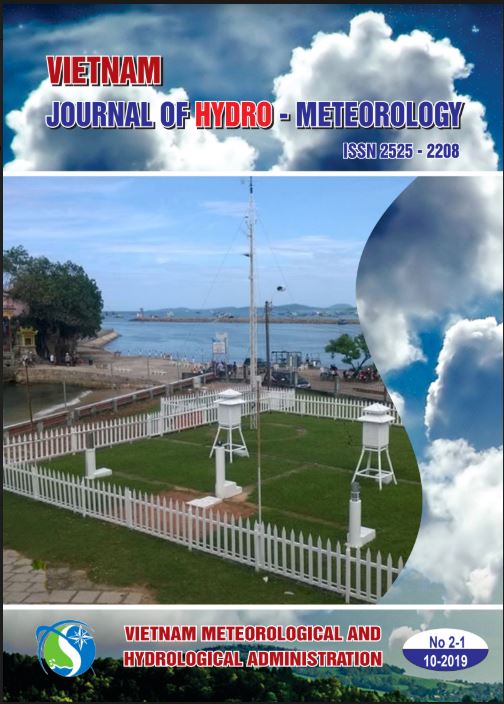
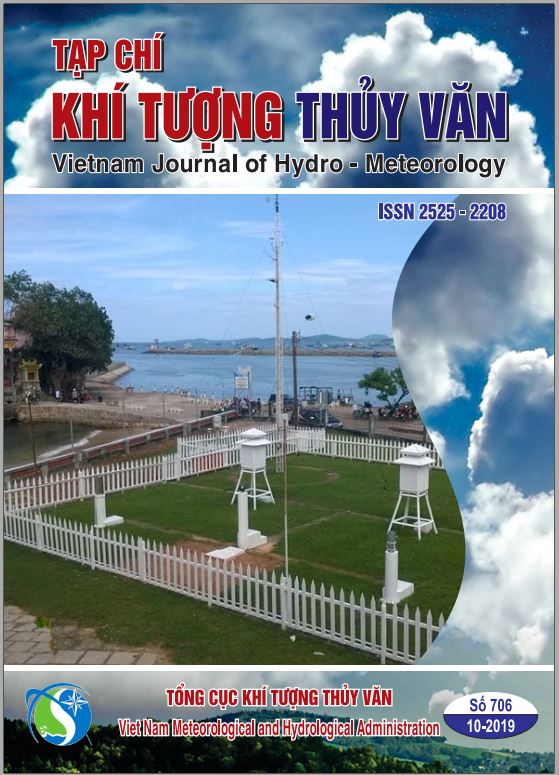
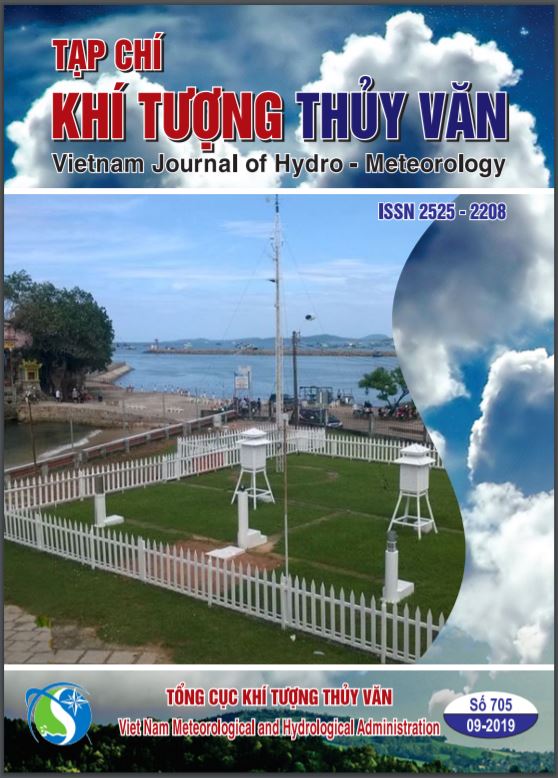

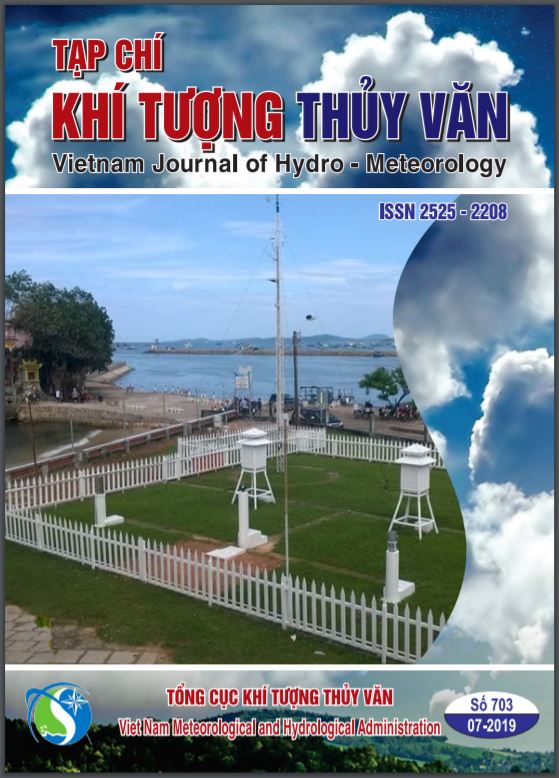
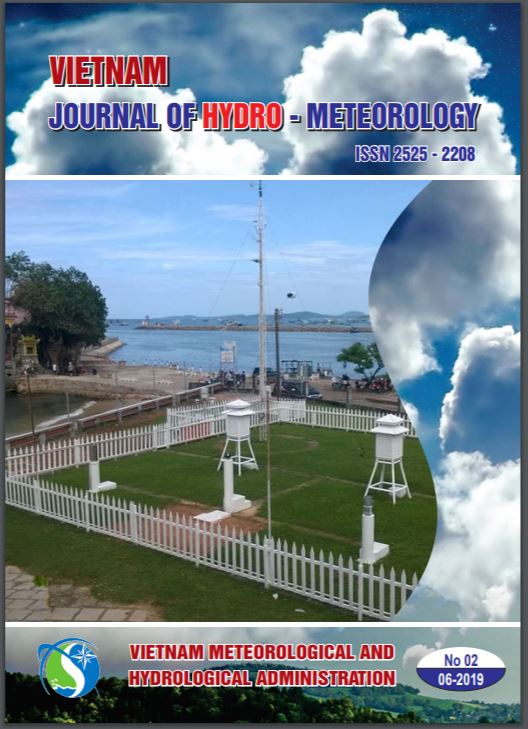

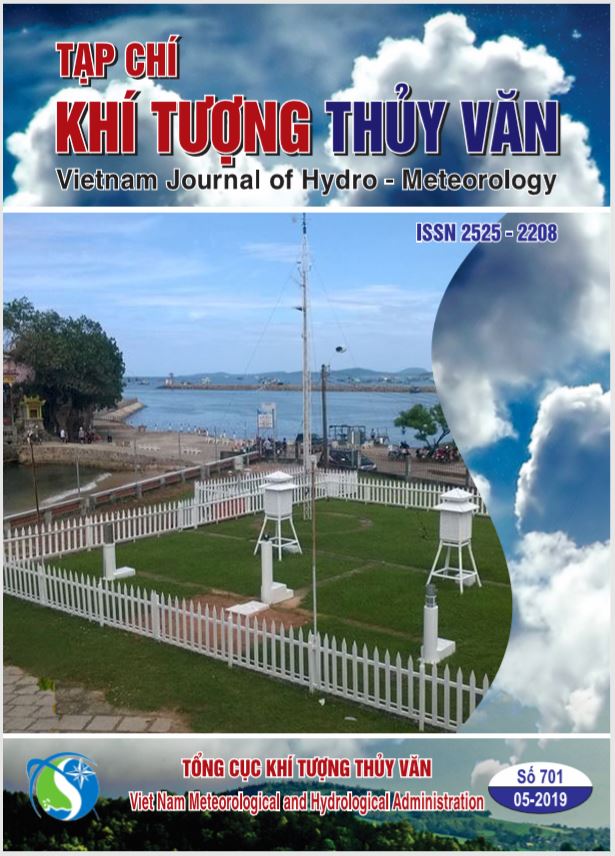
.png)
 Theo Trung tâm Dự báo khí tượng thủy văn quốc gia, hồi 4 giờ ngày 11-11, vị trí tâm bão số 7 ở vào khoảng 17,5 độ Vĩ Bắc; 111,8 độ Kinh Đông, trên vùng biển phía Bắc quần đảo Hoàng Sa. Sức gió mạnh nhất vùng gần tâm bão mạnh cấp 8, giật cấp 10. Di chuyển theo hướng Tây Nam, tốc độ khoảng 15 km/giờ.
Theo Trung tâm Dự báo khí tượng thủy văn quốc gia, hồi 4 giờ ngày 11-11, vị trí tâm bão số 7 ở vào khoảng 17,5 độ Vĩ Bắc; 111,8 độ Kinh Đông, trên vùng biển phía Bắc quần đảo Hoàng Sa. Sức gió mạnh nhất vùng gần tâm bão mạnh cấp 8, giật cấp 10. Di chuyển theo hướng Tây Nam, tốc độ khoảng 15 km/giờ. 
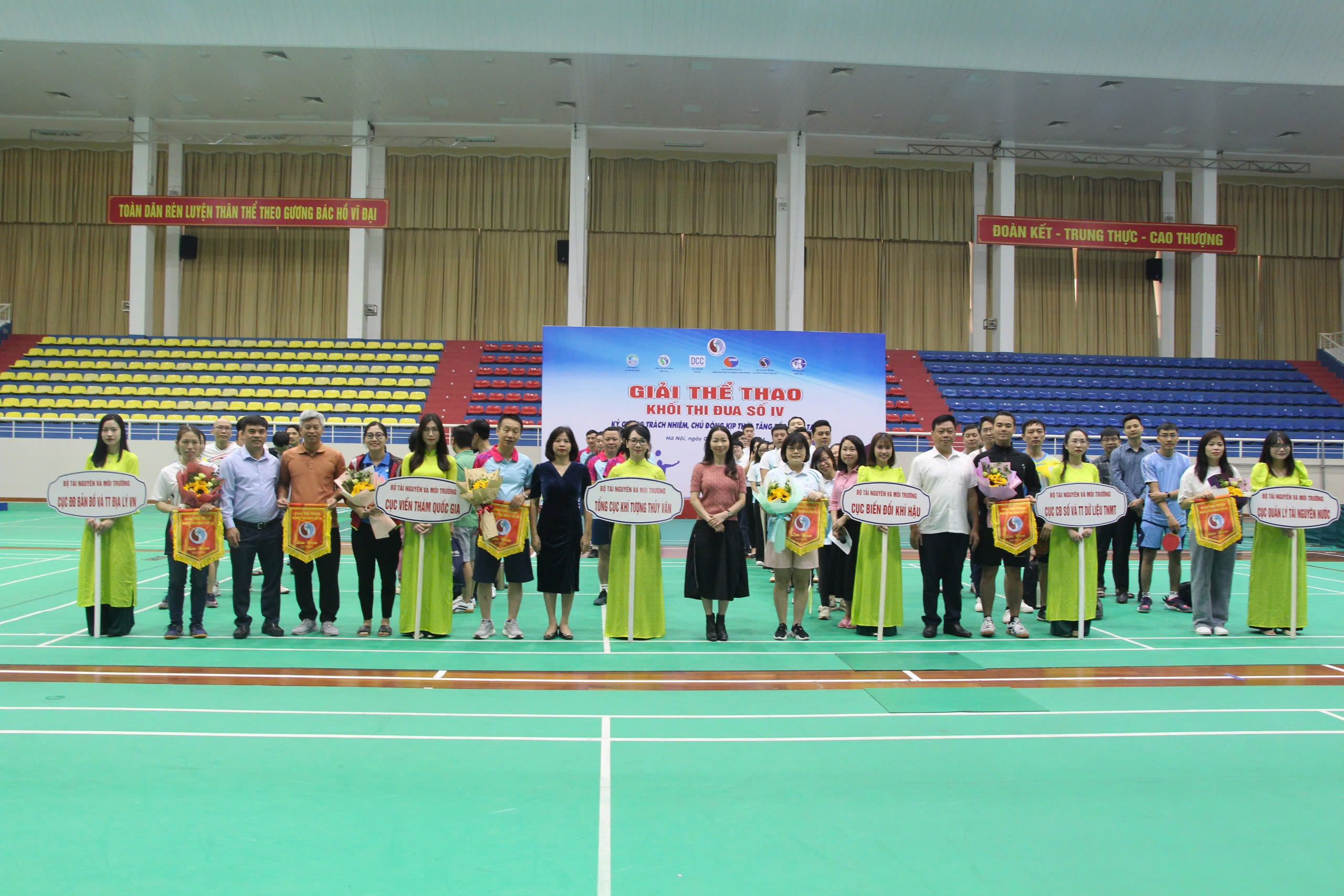
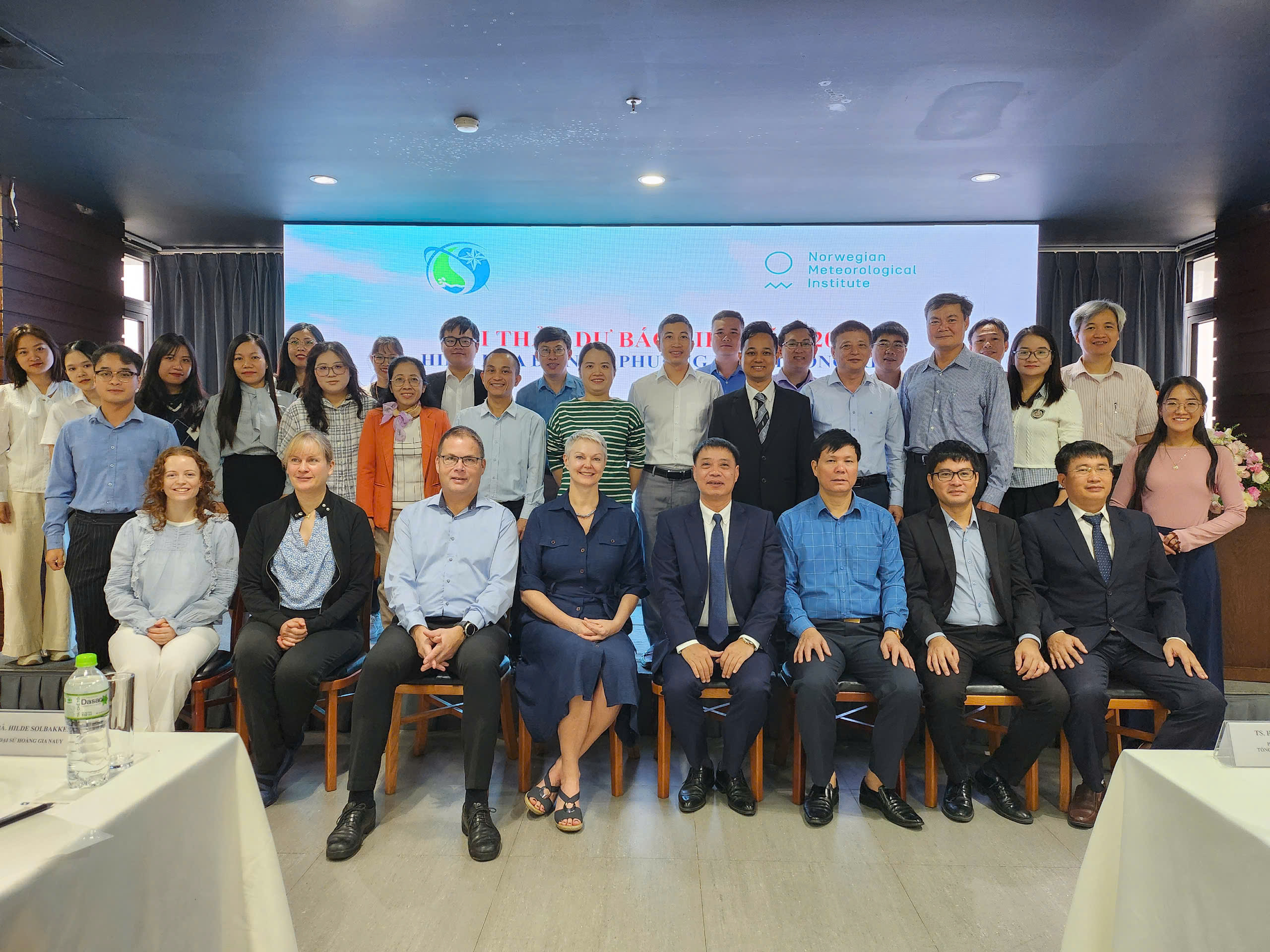
.jpg)
